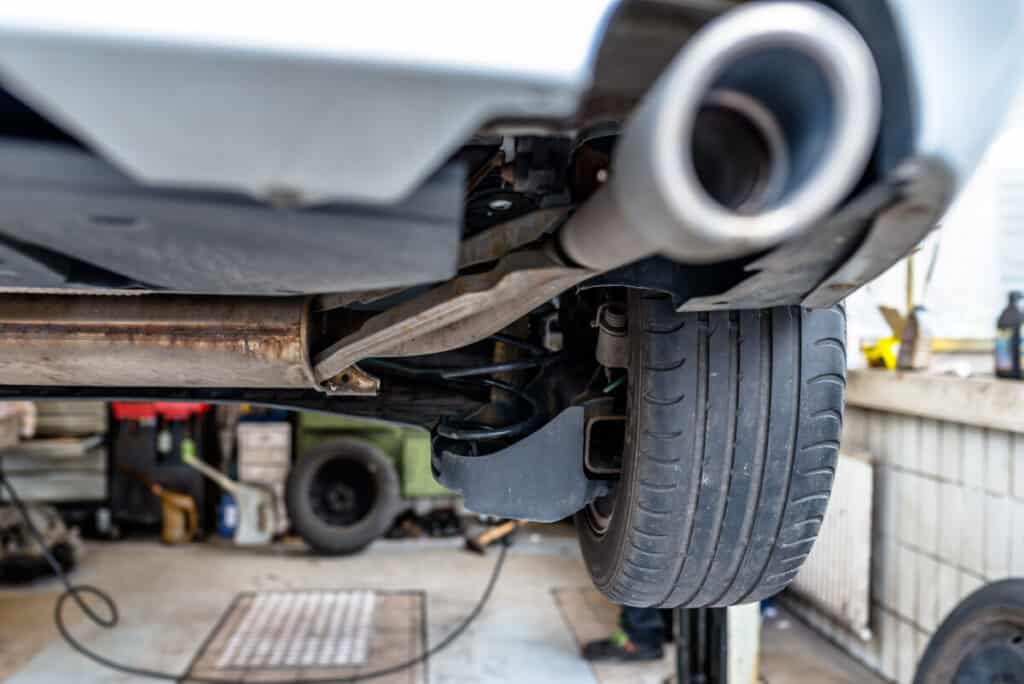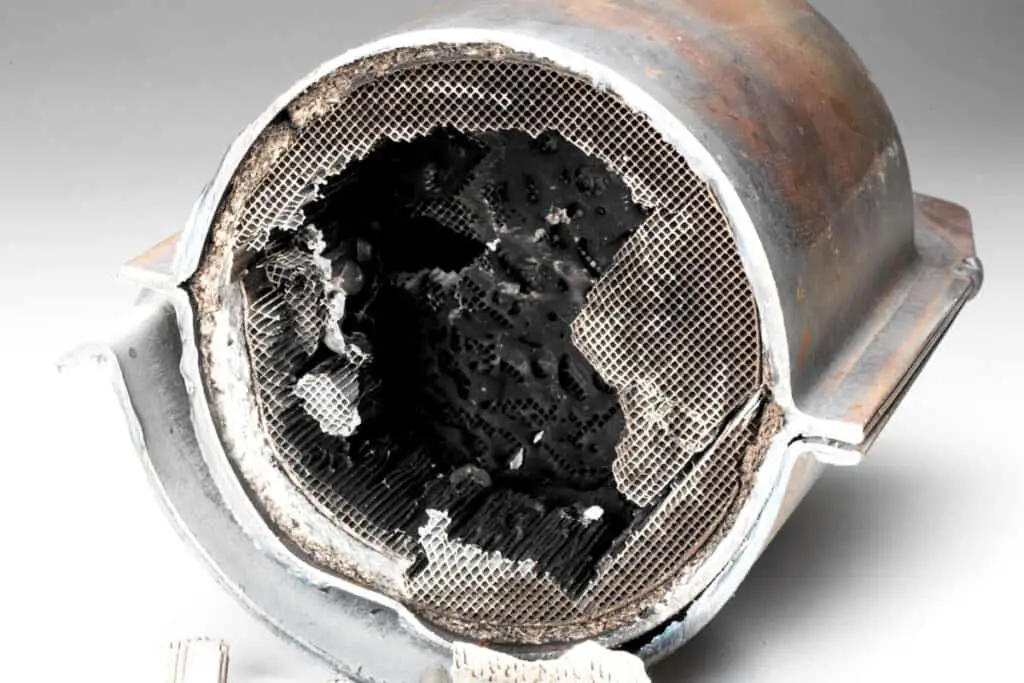
Replacing a catalytic converter may seem daunting, but it’s easier than it seems. Understanding how it functions can help.
Recycling plants and scrap yards will buy catalytic converters to reuse the precious metals like platinum and iron that make up the converter. These metals can be refined and reused, which has a positive effect on the environment, being a cleaner option than mining.
Catalytic converters are one of the most important pieces of machinery in a car. Filtering out poisonous gases, they perform these chemical reactions using valuable metals. Without a functioning one, cars can excrete hazardous chemicals, so replacing a converter is very important. The metals in converters are precious metals, however, so the old converter can still be reused if recycled.
What is a catalytic converter made of?
Catalytic converts are made of precious metals like copper, iron, and nickel. The inside of the converter has a honeycomb pattern of metals that use reduction and oxidation reactions to split molecules apart and reconnect as different, harmless molecules.
It is connected to an oxygen sensor that lets the converter know how much oxygen to add to complete the chemical reactions inside the car engine.This prevent carbon monoxide poisoning. Headache, dizziness, weakness, upset stomach, vomiting, chest pain, and confusion are the most common symptoms of carbon monoxide poisoning, but not the only symptoms.
The metals in a catalytic converter can be repurposed into anything from another car part to fine jewelry. Recycling is a cleaner process than mining, and has a positive impact on the enviroment.
Thanks to your catalytic converter, you don’t need to worry about inhaling the fumes, so take good care of it, and if it malfunctions, replace as soon as possible!
How to recycle a catalytic converter

To recycle a catalytic converter, first remove it from your vehicle. If you are scrapping the entire vehicle, don’t worry about this step, as scrap yards will do it for you. If you are keeping the car, however, you are probably better off taking it off yourself.
Once you’ve removed the catalytic converter from the car, you don’t need to disassemble it further. Catalytic converters are made of expensive metals, which can be reused, but removing them requires better machinery than you probably have at home. Your recycling plant will have an easier time making use of your catalytic converter if it’s not in pieces.
Most scrap yards and recycling plants will pay you for your converter, so try to shop around to see what offers the best price! How much you can get for the converter depends on factors like the type of car it came from, and what state it is in.
If you do not have the time to take the converter yourself, most places have an option to ship the converter. In fact, you may find that you can get a better price shipping to a different plant than you have in your nearby area. Recycling plants will take the precious metals from your converter to use in the making of other metal tools, for cars or other machinery.
After collection, recyclables are sent to a recovery facility to be sorted, cleaned and processed into materials that can be used in manufacturing. Recyclables are bought and sold just like raw materials would be, and prices go up and down depending on supply and demand in the United States.
How to remove your catalytic converter
The easiest way to remove a catalytic converter is, of course, to have someone else do it! But that’s not always a cheap or available option.
To remove the catalytic converter, you should first lift up your car. Some cars care far enough off the ground you won’t have to use a car jack. If you can’t crawl under your vehicle, however, use a car jack to lift your car up enough to get under safely.
Make sure your car jacks are secured, and don’t do this on uneven or unstable ground, as that can make the car jacks at risk for knocking over and making the car drop.
Once you are safely under the car, locate the converter. You should check your car manual for it’s exact location and description. Don’t take off the wrong piece! It’s an often cylindrical box connected to two pipes, one of which leads to the exhaust pipe. There should be bolts around the converter, which you can unscrew to gently take the converter out of the car.
Don’t drive without a catalytic converter! Immediately after removing the old one, replace it with a new one. The new converter should come with instructions on how to specifically install that kind of converter (different converts will need different installations). Once correctly installed, take or ship your old converter to a plant, and you’re done!
When to replace your catalytic converter

Catalytic converters can last years, but other strains on your car can shorten their lifespan. Issues like spent spark plugs, exhaust leaks, and soot build up can make the converter overheat and melt more delicate parts of the machinery and stop working.
On average, a catalytic converter will last about ten years, but keep an eye on your converter, as malfunction can cause dangerous gasses to leak out of your car unfiltered. You’ll know that you need to replace your catalytic converter if your engine stops working, as a broken converter can cause incomplete combustion. The catalytic converter prevents dangerous fumes from leaking out of your car, fumes that often smell like rotten eggs or sulfur, so if you think the converter has broken, check for bad smells.
If you suspect damage to your catalytic converter, check it yourself! Buildup of carbon, soot, cracks, dents, or other physical damage can suggest it’s time to replace your converter. Most often though, as long as you take care of your car, the catalytic converter should last as long as the vehicle does and not need to be replaced.
They are built to last, and made of strong materials that are difficult to destroy. That doesn’t mean you should be careful, however. The consequences of a malfunctioning converter are a lot more severe than a broken air conditioner.
Related Topics:
If you like the article above, here are some other similar articles you should check out!
